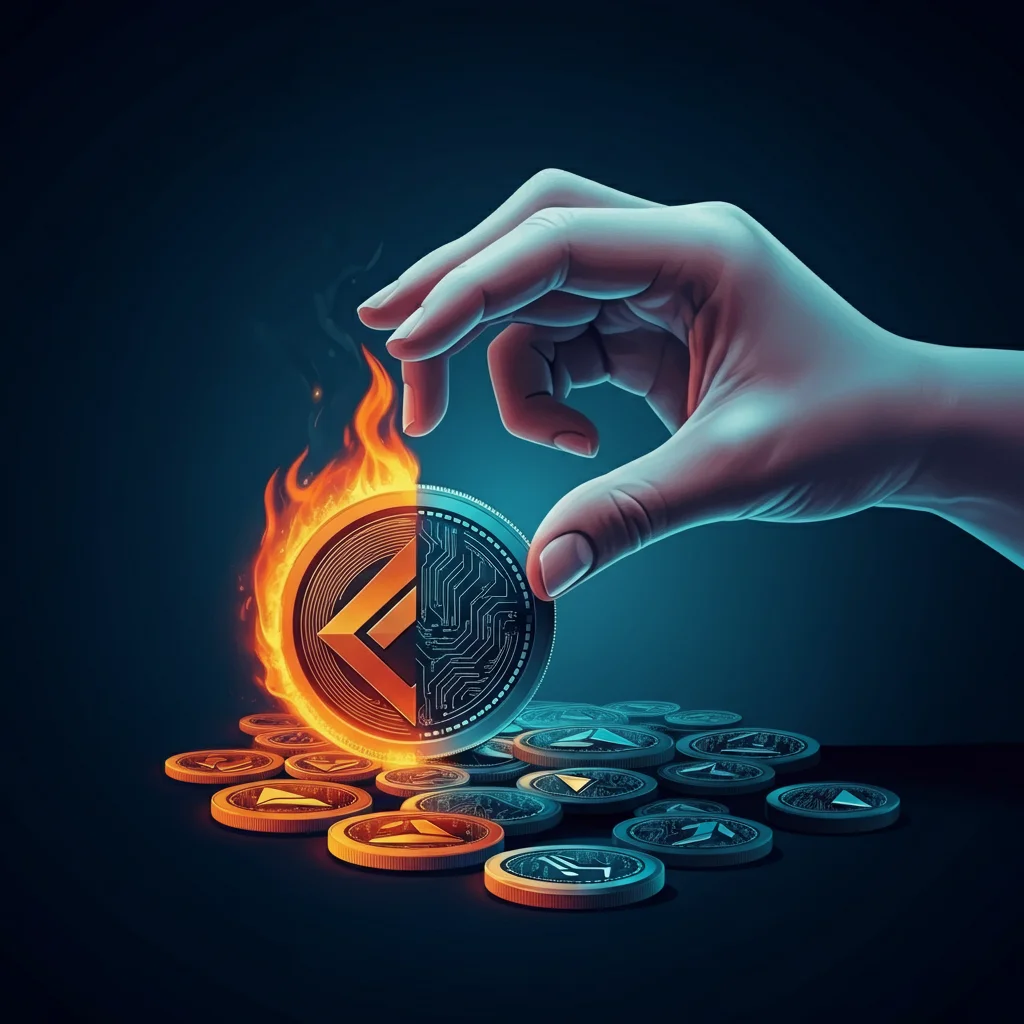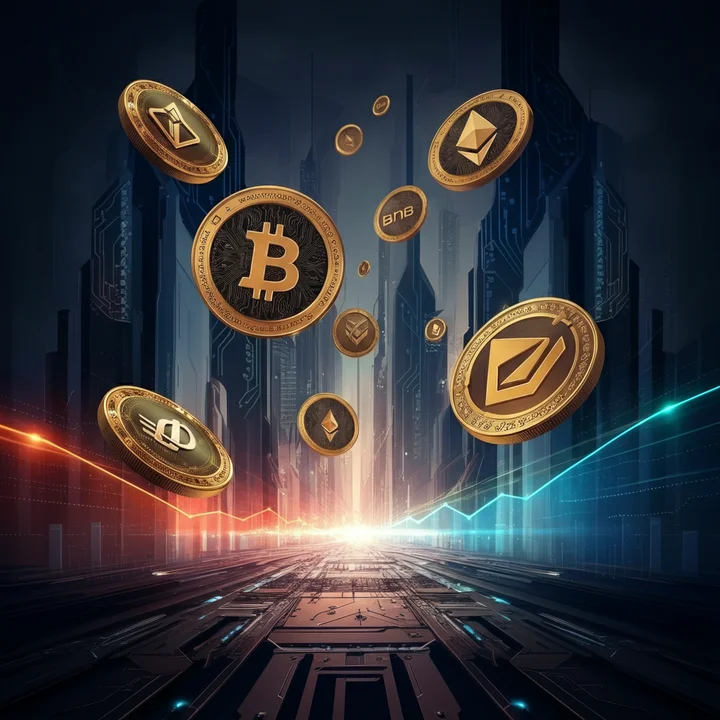If you’ve been keeping up with cryptocurrency and blockchain trends, you've probably heard the phrases "token burn" or "token buyback" thrown around. But what do they actually mean, and why are they so important in the crypto world? Token burns and buybacks are two mechanisms often used by blockchain projects to enhance the perceived value of a token and shape its market dynamics.
This blog dives into the details of token burns and buybacks. You’ll learn what these concepts are, how they work, their impact on token value, and real-world examples of projects leveraging these strategies. By the end of this article, you’ll have a solid understanding of their pros, cons, and what you, as an investor, should consider.
What Is Token Burning and How It Works?
What Is Token Burning?
Token burning refers to the process of permanently removing a portion of cryptocurrency tokens from circulation. This is typically done by sending the tokens to a "burn address" or "null address," which is essentially a black hole in the blockchain. Once tokens are sent to this address, they cannot be retrieved or spent, effectively taking them out of circulation for good.
This process is often publicly verifiable because blockchains are transparent, and anyone can see the transactions leading to the burn.
How Token Burning Works
Here’s a simple example to illustrate the process of token burning:
A cryptocurrency project decides to burn 1 million tokens.
These tokens are sent to a burn address with no private key, ensuring nobody can access them.
After the transaction, those tokens are no longer part of the circulating supply.
The result? Reduced token supply, which can potentially create scarcity and drive demand, depending on the underlying market dynamics.
Projects may burn tokens for several reasons, including controlling inflation, rewarding holders, or delivering on promises made during token launches.
Buyback Mechanisms Explained
What Is a Buyback?
Much like stock buybacks in traditional markets, buybacks in the cryptocurrency world involve a project or company purchasing its own tokens from the open market. The purchased tokens are then often burned or held in reserve. The main goal of buybacks is to reduce circulating supply and increase token value.
Some cryptocurrency projects use buybacks as a way to reward token holders indirectly. A reduced circulating supply can lead to price appreciation, thereby benefiting investors who hold the token.
How Do Projects Execute Buybacks?
Buybacks are typically conducted from revenue generated by the project. For example:
A blockchain project generates revenue from transaction fees or ecosystem services.
It allocates a portion of this revenue to purchase tokens from the market.
These tokens are either burned to reduce supply or held in smart contracts for future purposes.
This approach demonstrates confidence in the project’s future and can positively influence market sentiment.
Impact on Token Price and Value
Both token burns and buybacks can have a significant impact on tokenomics, or the economic model of a cryptocurrency.
1. Creating Scarcity
Burning or buying back tokens reduces the circulating supply, which can create scarcity. When supply decreases and demand remains steady or increases, basic economic principles suggest the price is likely to rise. This serves as a form of value preservation.
2. Boosting Investor Confidence
A project engaging in token burns or buybacks signals commitment to long-term token value. Investors often perceive this as a positive indicator, building trust in the project.
3. Incentivizing Holders
Scarcity-driven potential price appreciation can incentivize investors to hold onto their tokens for longer periods, fostering stability in the token’s value.
However, it’s worth noting that these mechanisms are not guaranteed to drive up prices. If a project has limited utility or demand, reducing supply may have minimal impact.
Examples of Projects Using Burn and Buyback Strategies
Many cryptocurrency projects have successfully implemented token burns or buybacks to influence market dynamics. Here are a few notable examples:
1. Binance (BNB)
Binance, one of the largest cryptocurrency exchanges in the world, conducts quarterly token burns for its native token, BNB. The burns are funded by Binance’s profits and are aimed at reducing BNB's circulating supply by 50%.
2. Ethereum (ETH)
Following the implementation of Ethereum Improvement Proposal (EIP) 1559, a portion of transaction fees paid in ETH is burned. This mechanism was introduced to create downward pressure on ETH’s supply, particularly during periods of high demand.
3. PancakeSwap (CAKE)
PancakeSwap, a decentralized exchange on the Binance Smart Chain, frequently burns its tokens as part of its deflationary model. The burns are funded by transaction fees generated on the platform.
4. Terra Luna Classic (LUNC)
After the collapse of its algorithmic stablecoin, Terra implemented a 1.2% tax burn for its native LUNC tokens, helping reduce the massive circulating supply and stabilize the price.
Pros and Cons of Token Burns and Buybacks
While token burns and buybacks can bring value to projects and investors, they also have their drawbacks. Here’s a breakdown:
Pros:
Reduces Supply: Creates scarcity that can boost token value over time.
Rewards Holders: Fosters higher returns for long-term holders by potentially influencing token price.
Signals Confidence: Projects committing to buybacks demonstrate faith in their token’s future.
Improves Tokenomics: A carefully managed supply supports a healthier economic model.
Cons:
No Guaranteed Price Increase: Reducing supply doesn’t always result in higher prices if demand is weak.
Mismanagement Risks: Poor execution or lack of transparency can damage trust.
Short-Term Fix: Buybacks and burns offer temporary solutions but don’t address core issues, such as creating real-world token utility.
Potential Speculation: These mechanisms might encourage speculative trading rather than actual adoption.
Investor Considerations
If you’re an investor evaluating a project using token burns or buybacks, here are a few points to keep in mind:
Understand Token Utility
A reduction in supply is meaningless without significant demand. Ensure the token has real-world use cases or value.
Evaluate Transparency
Check if the project provides clear information about burn and buyback processes. Are the transactions verifiable on the blockchain? Transparency builds trust.
Monitor Sustainability
Look into the revenue streams funding buybacks. Projects relying solely on funds from token sales may struggle to sustain these strategies in the long term.
Watch Out for Hype
Don’t be swayed by projects hyping burns or buybacks. Always prioritize fundamental value over short-term speculation.
Why Token Burns and Buybacks Matter
Token burns and buybacks are powerful tools in the cryptocurrency ecosystem. They can influence demand and supply dynamics, align tokenomics with sustainable project growth, and reward loyal investors. However, they shouldn’t be seen as a magic solution. For these mechanisms to be effective, they must be part of a broader strategy that includes utility, adoption, and community trust.
If you’re considering investing in tokens or evaluating project sustainability, use the tips shared here to make informed decisions that go beyond surface-level hype.

